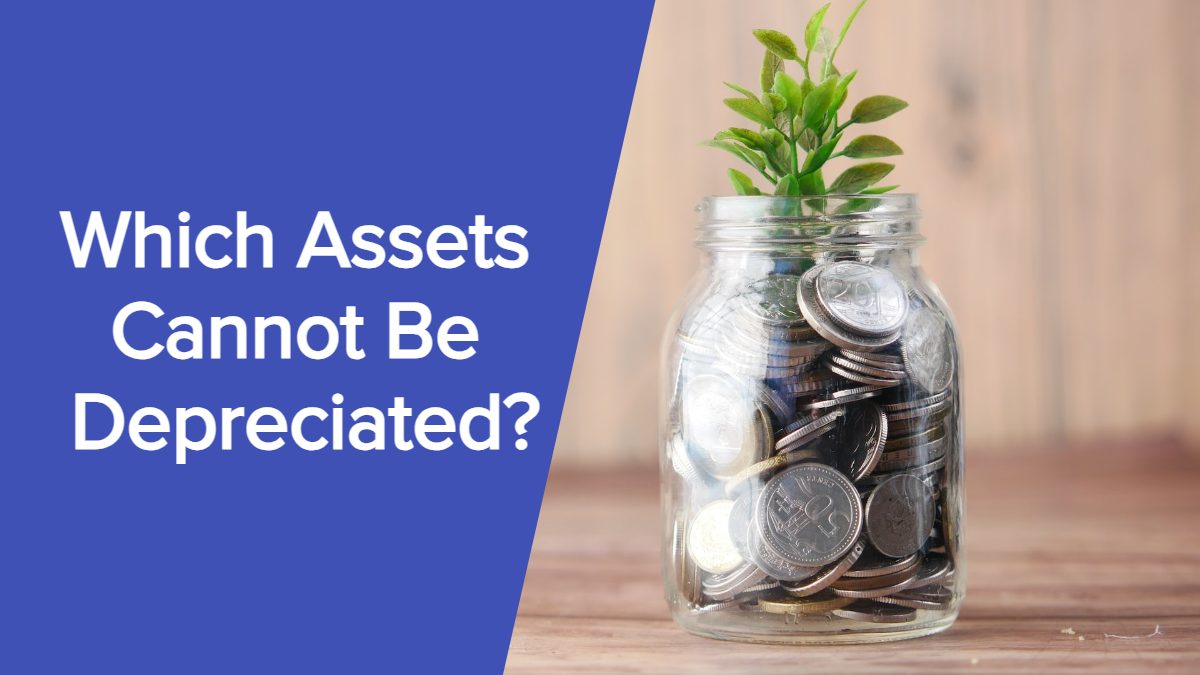Depreciation is a Way, Accountants keep track of how the value of things like Equipment and Ideas goes down over time. It’s important to figure out which things can lose value and which ones can’t, and why. This helps Businesses handle their Money Better.
In this article, – we'll look at things that can be Depreciated and those that can't, – and why that matters for managing a Business's Money.
Understanding Asset Depreciation helps Businesses make smart choices about where to invest money and how to take care of their Business.
In This Article
What is Depreciation in Business?

Before we discuss the assets that cannot be Depreciated,– let’s make sure we understand Depreciation.
Depreciation in Businesses is when the value of something, – like Equipment, goes down over time in Financial Terms as it gets older and used.
It’s a way of recognizing that things lose value Gradually because of things like Wear and Tear, – getting old, or New Technology coming in.
Accountants use Depreciation – to figure out how much it costs to make things and to keep track of Expenses tied to using Equipment for Making Stuff.
In cost accounting, – Depreciation is like an Extra Cost that gets divided among the things being made.
This helps make sure that the Cost of using Equipment is shared fairly among all the things produced.
What Is Depreciable Property?

Depreciable property is stuff that can be counted for Taxes and Accounting, – and you can record how it loses value based on IRS rules.
This includes things like – Cars, Buildings (not the land), Computers, Office Gear, Machines, and Big Equipment. All these things are called long-term assets and are subject to Depreciation.
Here are some Key Characteristics of Depreciable Property:
Tangible:
Depreciable Property must possess a physical form, – such as Equipment, Buildings, or Vehicles. Generally, – intangible assets like patents or copyrights are not subject to Depreciation – but may undergo “Amortization.”
Used in Business:
To be Depreciable, – the Property must find an Application in a Trade or Business. Assets utilized for personal purposes do not Qualify for Depreciation deductions.
Has a Determinable useful life:
The Property must exhibit a limited lifespan that can be reasonably estimated. Land, – for instance, – is not eligible for Depreciation since its useful life is considered Indefinite.
Cost can be Recovered:
The cost of the Property can be Distributed over its useful life through the Utilization of Depreciation deductions.
What Qualifies as a Depreciable Asset?

Depreciable Assets are things a business can write off for Depreciation, – following IRS rules. The IRS Publication 946 outlines the criteria a Property must meet to be considered a Depreciable Asset:
- You must be the Owner
- You must use it in your Business or Income-Producing activity
- It must have a useful life of at least a year
Here are some more Things to Consider about:
How long it Lasts:
How long an Asset lasts is estimated based on things like Industry Standards, what the Manufacturer Suggests, and how it’s been used before. Different things have different lifespans.
Ways to Calculate Depreciation:
Businesses can use different ways to figure out how much an Asset can be Depreciable each year. They might use Methods like – Straight-Line, Accelerated, or Double-Declining Balance.
What it’s Worth at the end:
The Salvage Value of an Asset is what it is expected to be worth when it is no longer useful. To find the Depreciable basis, – this value needs to be subtracted from the Asset’s cost.
How we Show it in the Books:
On the balance sheet, – Depreciable Assets are shown at their net book value. This means we take the original cost and subtract the Accumulated Depreciation.
Common Depreciation Methods

Depreciation is a way for Businesses to spread out the cost of things like Equipment or Buildings over time. There are different ways to Calculate Depreciation, – and here are some common ones:
Straight-Line Depreciation:
How it works: Every year, you take the cost of the thing, – subtract any value it might have left (salvage value), – and then divide by how many years you expect to use it.
Example: If a Machine costs $1,000 and will be used for 5 years with no salvage value, – each year you record $200 in Depreciation Expenses ($1,000 / 5 years).
Double Declining Balance Depreciation:
How it works: This Method makes more Depreciation happen in the early years. You double the Straight-Line rate and apply it to the remaining value each year.
Example: Using the same $1,000 machine, – if the useful life is 5 years, in the first year, – you record $400 in Depreciation (double the $200 straight-line amount).
Units of Production Depreciation:
How it works: This Method links Depreciation to how much the thing is actually used or Produced. It’s good for things that wear out based on usage.
Example: If a vehicle costs $10,000, – and it’s expected to run for 100,000 miles, – each mile could Contribute to the Depreciation cost.
Sum-of-the-Years-Digits Depreciation:
How it works: This Method also Speeds up Depreciation early on. You add up the digits of the useful life and apply a decreasing fraction each year.
Example: If the useful life is 5 years, – you add 5 + 4 + 3 + 2 + 1 = 15. In the first year, – you’d record 5/15 of the total Depreciation.
MACRS (Modified Accelerated Cost Recovery System):
How it works: This Method, used for Tax Purposes, – combines the Double Declining Balance and Straight-Line Methods. Different types of Assets have set recovery periods and percentages.
Example: There are tables for different types of assets that show how much you can Depreciate each year.
Special Depreciation Methods:
How it works: Sometimes, – there are Special Methods for specific Situations or Industries, – like ACRS for Tax purposes in the U.S.
Example: If the Government offers a Special Method for certain Equipment, Businesses might use it to get Tax Benefits.
Lastly, choosing a Depreciation Method depends on Factors like what the thing is, how it’s used, and Tax Rules. Businesses can pick a method that makes sense for them and follows the Rules.
Depreciable Assets: Which Asset Can be Depreciated?
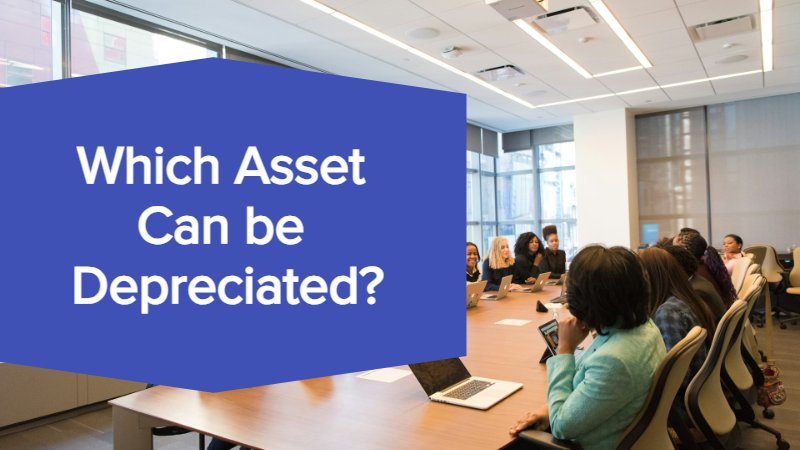
There are several types of Assets that can be Depreciated in Business. Let’s take a closer look at different types of Depreciable Assets:
Buildings
Buildings are subject to Depreciation. Businesses can spread out the cost of some buildings they own over time, – like offices, warehouses, factories, and even apartment buildings used for rentals. It basically means you can claim a small deduction on your taxes each year for the building’s wear and tear.
Machinery and Equipment
Things like – Industrial Machines, Computers, Furniture, and other things used in Business Operations can be Depreciated too. It’s based on how long they’re expected to be useful.
Vehicles
Cars, trucks, vans, and other vehicles used for Business can also be Depreciated. The amount of Depreciation depends on things like how much they cost, how much they’re used, – and how long they’re expected to last.
Capitalized Research and Development (R&D) Costs
Imagine you spend money creating something new for your business, – like a cool new product, a more efficient process, or even a unique service. Under certain circumstances, – you can actually spread the cost of creating these things over time, – similar to how you might depreciate a building.
However, – there are some rules. The costs have to meet certain criteria, – meaning they have to be valuable to your business for a specific period and not something you expect to use forever.
If they meet those criteria, – then they can be considered “depreciable assets,” allowing you to slowly deduct their cost from your taxes over time.
Leasehold Improvements
If you rent a space for your business and decide to make improvements, – like remodeling the interior or adding an extension. While you don’t own the building, – you can still benefit from these changes through “depreciation.”
This means you can spread the cost of the improvements over several years and deduct a portion of it from your business taxes each year.
Leasehold Rights
If your Company pays for the right to use a rented space, – that cost can be depreciated over the term of the lease.
Remember, – the Specific Depreciable Assets can be different depending on where you are, Local Tax Laws, Accounting Standards, – and the kind of Business you’re in.
It’s a good idea for Businesses to talk to Experts, – like Accountants or Tax Advisors, to make sure they’re doing it right.
If you don’t get it right, – you might have ⚠️ Trouble with Taxes later on, so it’s better to ask a pro for help.
Non-Depreciable Assets: Which Asset cannot be Depreciated?
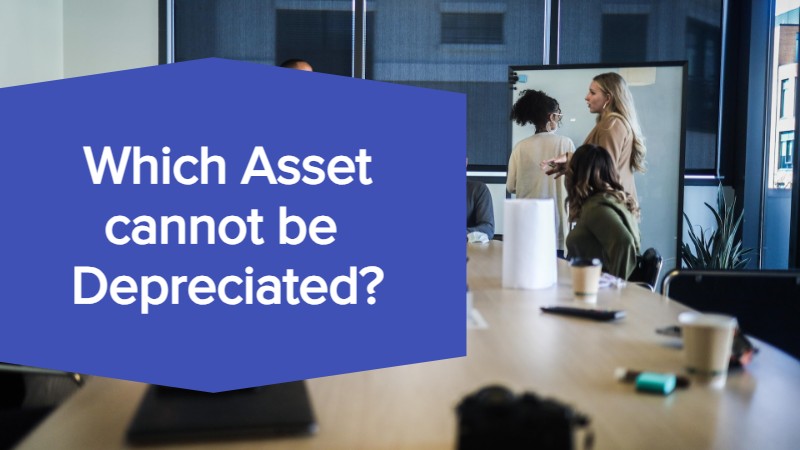
Now you know what Assets can be Depreciated. Let’s see which Assets Cannot be Depreciated in Business:
Land as an Asset
Land is different from things like cars and machines. Cars and machines get worn out and don’t work as well over time. Land, – on the other hand, doesn’t wear out. It’s always there and can be used forever.
Because of this, – we say the land has an “unlimited life.” Since land never wears out, – there’s nothing to spread its cost over time, – which is what depreciation is for. So, we don’t depreciate land.
Components of Land
However, – when we add things to the land, – like Buildings or Landscaping, those can lose value over time and be subject to Depreciation. But even if these things can be depreciable, – the land itself cannot be depreciated.
Intangible Assets
Let’s talk about another group of things called “intangible assets.” These are things you can’t touch, – like company Goodwill, Trademarks, Brands, Copyrights, and Patents. These things usually don’t lose value in the way other stuff does, and here’s why:
Lasts a Long Time: Unlike cars or buildings, – things like patents and trademarks can be around for a very long time. The problem is, – that it’s hard to guess exactly how long these “intangible” assets will last.
Because of this uncertainty, – we can’t use “depreciation” for them. We simply don’t know how much value they will lose over time.
Amortization Instead: Instead of using “depreciation” for things like patents and trademarks, – we use a term called “amortization.” It might sound a bit different, – but it’s basically the same idea.
Both spread out the cost of an asset over its lifetime, – but amortization applies specifically to non-physical, intangible assets like patents and trademarks, – unlike depreciation which is used for physical things like buildings.
Buying Stocks, Bonds, and Mutual Funds
When you Invest in things like Stocks, Bonds, or Mutual Funds, they cannot be subject to Depreciation. Here’s why:
Marketable securities: These investments, – called “marketable securities,” are like tickets to a game where the price keeps changing. Their value depends on what people are willing to pay for them in the market, – which can fluctuate quite a bit depending on how things are going in the economy.
So, unlike a house with a fixed price, – these investments can go up or down in value based on market conditions.
Short-term holding: Stocks, bonds, and mutual funds are typically bought and held for the short term, – meaning people don’t plan on keeping them for a long time. Unlike buildings or equipment that wear out over time, – these investments don’t experience depreciation in the traditional sense.
Instead, – their value fluctuates due to various market factors. So, instead of worrying about them losing value through depreciation, – we focus on their price changes in the market.
Financial instruments
Financial Instruments like – Derivatives, Futures, and Options can’t be Depreciated. Here’s why:
Market Value Changes: These financial instruments, – borrow their value from something else, like a company (through stocks), a loan (through bonds), or a basket of investments (through mutual funds).
Because their value can go up and down based on various factors, – the concept of traditional depreciation doesn’t make sense.
Short-Term Use: People buy these investments for short-term goals like making money quickly or reducing risks. They aren’t meant to be held for a long time, unlike things that wear out over time, like buildings.
Natural Resources
Things like oil, gas, minerals, and forests are different and can’t be Depreciated because they have some Unique Characteristics:
They run out eventually: Unlike buildings or cars, – these resources are finite, meaning they eventually disappear as we use them up.
Depletion accounting: Instead of calling it Depreciation, – we use a method called “Depletion accounting” to keep track of how much we take out and use. This helps us spread the cost of getting them over the estimated amount we have left.
How Do You Calculate Depreciable Assets?

Calculating the Depreciation of Assets involves using different Methods, – but the most common one is the straight-line method.
Here’s a simple guide:
- Determine the Cost: Find out how much the Asset costs. This includes not just the Purchase price but also Additional Expenses like Taxes and Installation.
- Identify the Salvage Value: Salvage value is an estimate of how much the Asset will be worth at the end of its useful life. It’s an important factor for calculating Depreciation.
- Determine the Useful Life: Estimate how many years the Asset will be useful to your Business. This is the period over which you’ll spread the Depreciation.
Straight-Line Depreciation:
Use the formula: (Cost – Salvage Value) / Useful Life. This gives you the annual Depreciation Expense.
Other Methods:
There are also different methods like Double Declining Balance, Units of Production, or MACRS (for Tax purposes). Choose a Method that fits your Business and the nature of the Asset.
Recording Depreciation:
Deduct the annual Depreciation Expense from the Asset’s book value each year. The book value is the original cost minus the total Accumulated Depreciation.
Always remember, – that specific Rules and Regulations may vary, so it’s good practice to consult with Accounting Professionals or Tax Advisors to make sure you’re following the right Guidelines for your Business and Location.
What is a Depreciation Tax Shield?
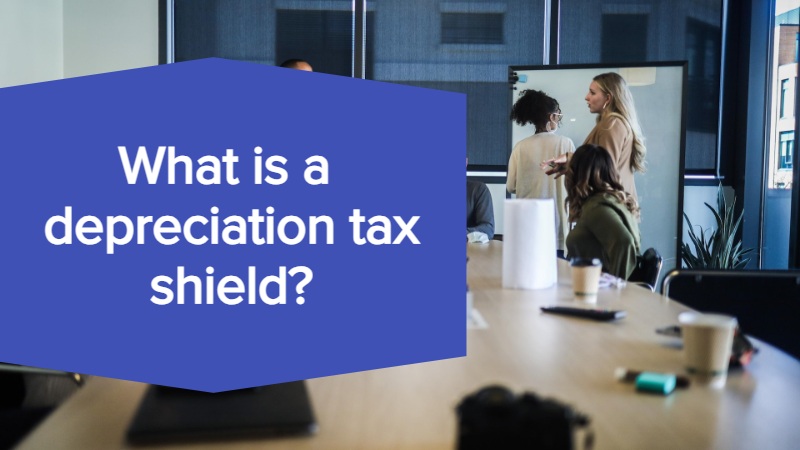
A Depreciation Tax Shield refers to the Tax savings a company experiences as a result of the Depreciation Expense on its Assets.
When a Business owns and uses Assets that are subject to Depreciation, – it can deduct the Depreciation Amount from its Taxable Income. This deduction reduces the company's Taxable Income, – which, in turn, lowers its Tax liability.
The concept works based on the Principle of Depreciation, – the Business is Allowed to recognize this reduction in value as an Expense for Tax purposes.
Here’s a simple breakdown:
- Depreciation Expense: Businesses record Depreciation as an Expense on their Financial Statements to reflect the wear and tear or reduction in the value of their assets over time.
- Tax Deduction: The Depreciation Expense is Allowed as a Tax deduction by Tax Authorities. This deduction reduces the company’s Taxable income.
- Tax Shield: The tax savings resulting from the Depreciation deduction act as a “Tax Shield.” It Shields a portion of the company’s income from being Taxed. The Depreciation Tax Shield can be a valuable benefit for Businesses because it reduces their overall tax burden.
- It provides additional cash flow that can be reinvested in the Business or used for other Financial needs. You can buy new equipment, hire new employees, – or expand your business in a new location.
It’s important to note that Tax Laws and Regulations Governing Depreciation can vary, – so Businesses should consult with Tax Professionals to Ensure compliance and maximize the Benefits of Depreciation Tax Shields.
What Does It Mean to Depreciate a Rental Property?
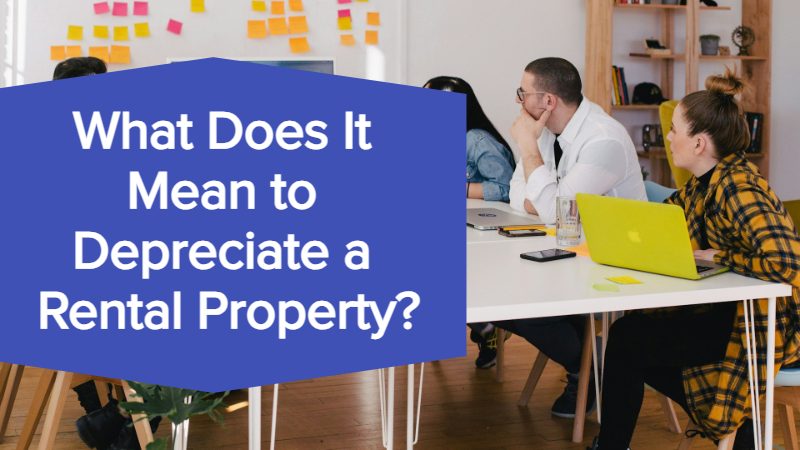
Depreciating a Rental Property means – spreading out the cost of the property over its useful life for Tax purposes.
It is an Accounting Method that recognizes the gradual wear and tear, Deterioration, or Obsolescence of the Property as it is used to Generate Rental Income.
The Depreciation Expense is considered a non-cash Expense because it doesn’t involve an actual outlay of cash. Depreciating a Rental Property can be Beneficial for Property Owners as it provides a Tax Advantage by lowering their Taxable Income.
Here’s a simple Explanation of how it works:
- Cost of the Property: When you Purchase a Rental Property, – the total cost includes not only the purchase price but also certain associated costs like – Closing Fees, Legal Expenses, and Improvements that increase the property’s value.
- Useful Life: The IRS sets Guidelines for the useful life of different types of Assets, – including Residential and Commercial Properties. For Residential Rental Properties, – the current IRS Standard is 27.5 years.
Depreciation Calculation:
Use the straight-line method for Residential Real Estate. The Formula is – (Cost of Property – Estimated Salvage Value) / Useful Life.
Tax Deduction:
The calculated Depreciation amount is then deducted from your Rental income each year. This deduction reduces your Taxable Income, – potentially lowering the Taxes you owe.
Recapture When Sold:
It’s important to note that when you sell the Rental Property, – you may be required to recapture (pay back) some of the previously claimed Depreciation as part of the Capital Gains Tax.
However, Tax Laws can be complex, – and it’s recommended to consult with Tax Professionals or Accountants to Ensure proper adherence to regulations and maximize the Benefits of Depreciation in your Specific Situation.
How can you figure out if something you own will last more than a year?

To decide if an Asset, like a Machine or Equipment, – will last longer than a year, – you need to think about a few things.
- First, check what the Manufacturer says about how long each part of the Asset should last. They might have done tests to figure this out.
- Next, think about Maintenance. If a part needs regular check-ups and fixes to stay in good shape, – it might not last as long overall.
- Also, consider if there are any outside factors that could harm the Asset. For example, – if it’s outside and faces really hot or cold weather a lot, – the materials might wear out faster.
In the end, you should look at all the information you have, – and if anything outside might affect it. This will helps you figure out if the Asset will stick around for more than a year.
Frequently Asked Questions (FAQs)
Q1: What is Asset Depreciation?
A: Asset Depreciation is the process of allocating the cost of a tangible asset over its useful life. It reflects the gradual reduction in the value of the asset due to factors such as – wear and tear, obsolescence, or usage.
Q2: Why is Asset Depreciation Important?
A: Depreciation is important for accurate Financial reporting and Tax purposes.
It helps Businesses spread the cost of Assets over time, – match Expenses with revenues, – and provide Tax deductions that can contribute to overall Financial Efficiency.
Q3: What are the Common Methods of Asset Depreciation?
A: Common Methods include straight-line depreciation, double declining balance, units of production depreciation, sum-of-the-years-digits, – and specific methods like MACRS (Modified Accelerated Cost Recovery System) for tax purposes.
Q4: Can all Assets be Depreciated?
A: No, not all Assets can be Depreciated. Land, for example, – is typically not Depreciable because it usually doesn’t wear out.
Also intangible Assets, like Patents or Trademarks, – are subject to Amortization rather than Depreciation.
Q5: How is Asset Depreciation Calculated?
A: The most Common Method is the straight-line formula: (Cost – Salvage Value) / Useful Life.
Other methods involve different calculations based on factors like – expected usage, remaining book value, or production output.
Q6: What is a Depreciation Tax Shield?
A: A Depreciation Tax Shield refers to the Tax savings a company Experiences due to the Depreciation Expense on its Assets. It results in a reduction of Taxable Income, – leading to lower Tax liabilities.
Q7: How does Asset Depreciation apply to Rental Properties?
A: Depreciating a Rental Property involves spreading its cost over its useful life for Tax purposes. It allows property owners to deduct a portion of the Property’s value each year, – providing a Tax advantage.
Q8: Are there Specific Rules for Asset Depreciation?
A: Yes, Specific rules can vary based on local Tax Laws, Accounting Standards, and Industry practices. Businesses must consult Accounting Professionals or Tax Advisors to Ensure compliance.
Q9: Can Depreciation Impact the Value of an Asset on Financial Statements?
A: Yes, Depreciation affects the book value of an Asset on Financial statements. The Accumulated Depreciation is subtracted from the original cost, – resulting in the Asset’s net book value.
Q10: How does Asset Depreciation Impact Cash Flow?
A: Depreciation is a non-cash Expense, – meaning it doesn’t involve actual cash outflows. While it reduces Taxable income, – it doesn’t impact cash flow directly. However, the Tax savings from Depreciation can positively affect cash flow.

